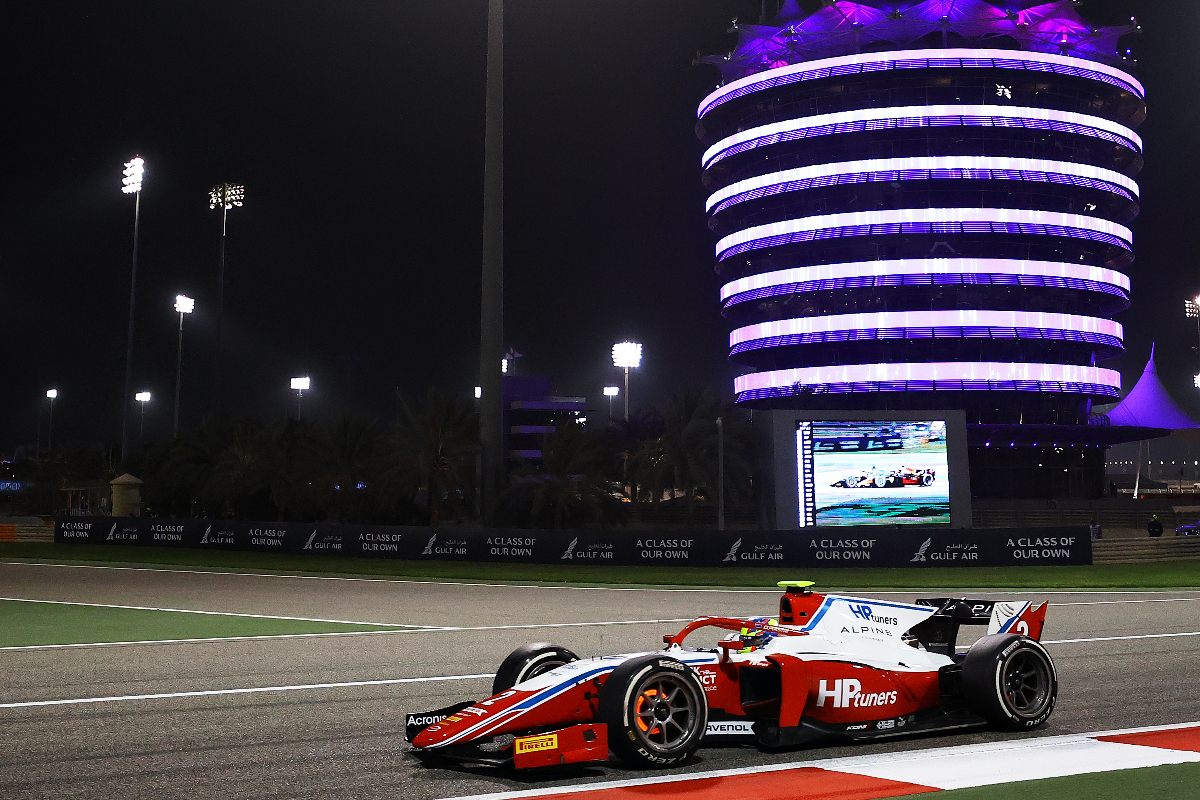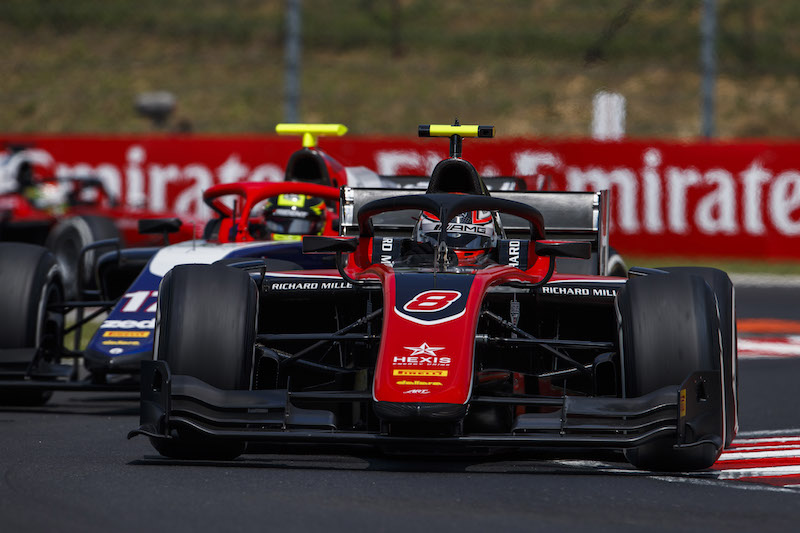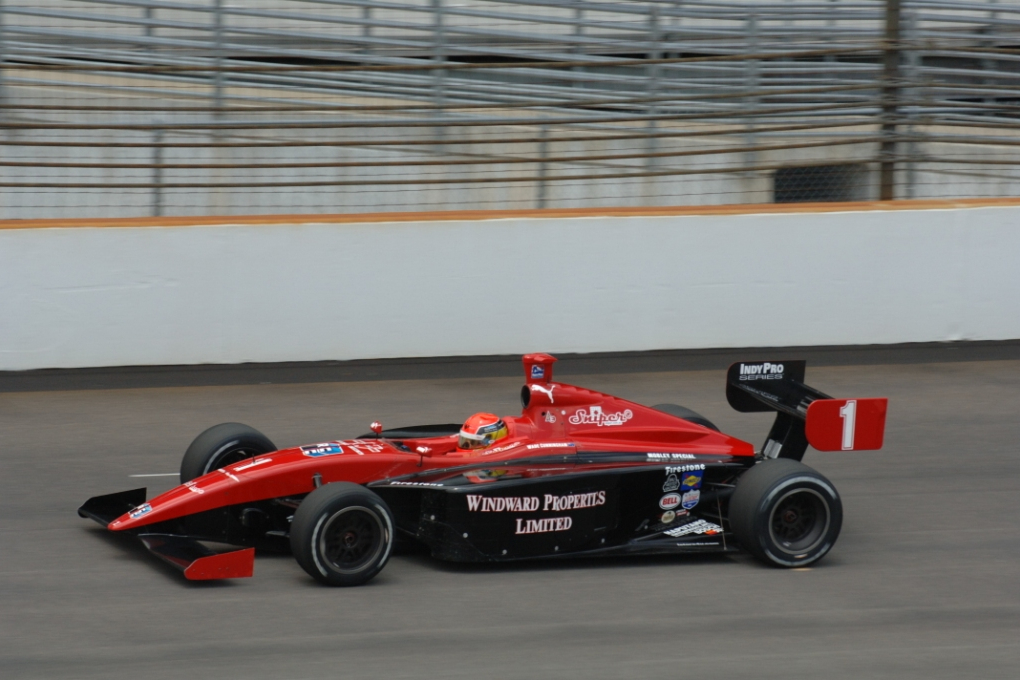
Photo: Formula Motorsport Limited
As Guanyu Zhou looks at options across Formula 1 and Christian Lundgaard flirts with IndyCar, questions remain over Alpine’s other Formula 2 junior: points leader Oscar Piastri. What’s next for the Australian?
“If I do have a successful year this year and if I do manage to win the championship, then that will be three [championships] in a row. I don’t really know what more I could do than that.”
Those were the words of Oscar Piastri earlier this season, at a point when Alpine stablemate Guanyu Zhou sat at the top of the Formula 2 standings. But now it’s the 20-year-old Australian who sits at the forefront of their title bout.
Only one driver has ever, in three successive years, won titles going up to the second tier of single-seaters as they move up the ladder, so Piastri could achieve a seriously remarkable feat if he follows up his Formula Renault Eurocup and FIA Formula 3 Championship titles with the F2 crown in his rookie season.
Alpine has quite the conundrum with its junior drivers. For 2022, Fernando Alonso will enter the second year of his two-year deal with the F1 team, while Hungarian Grand Prix winner Esteban Ocon will drive for it for the next three seasons.
Zhou has already spoken candidly about how he is eyeing up other F1 teams, while Christian Lundgaard – who has often been thumped by the cartoon anvil in 2021 – is already looking towards IndyCar and will debut in the series this weekend. That leaves Piastri who, if he continues to perform, could have a very short F2 career and will have to look for something worthwhile in 2022. Because if any of these three win the F2 title, they won’t be allowed to return to the series next year.
It isn’t necessarily as if Piastri needs several years at this level, though. He’s acquitted himself outstandingly in the first half of the season, notched up a win and owned the Silverstone weekend (despite being disappointed by his pace in the feature race). No flukes, no considerable car advantage, just consistency, great overtaking and excellent speed. There isn’t a huge amount he can learn from a second year if he continued at the front.
 His two blemishes this season came from a slightly over-ambitious move in Bahrain’s feature race and a collision in Baku. Otherwise, he has consistently tallied up points and podiums, largely had the upper hand over very highly-rated Prema team-mate Robert Shwartzman in qualifying (although Shwartzman has had miserable luck at times) and, along with former FIA F3 rivals Theo Pourchaire and Liam Lawson, has flown the flag for the rookies this season.
His two blemishes this season came from a slightly over-ambitious move in Bahrain’s feature race and a collision in Baku. Otherwise, he has consistently tallied up points and podiums, largely had the upper hand over very highly-rated Prema team-mate Robert Shwartzman in qualifying (although Shwartzman has had miserable luck at times) and, along with former FIA F3 rivals Theo Pourchaire and Liam Lawson, has flown the flag for the rookies this season.
Alpine has been open about looking at alternative landing points for its juniors outside of its own team. With both of the team’s seats locked up and no customer team to influence, it is very difficult to see an obvious place for a driver to go. Two of the teams performing poorly in F1 – Alfa Romeo Racing and Williams – could be among the most coveted seats when the silly season truly gets going. Sauber is now believed to control both Alfa seats for the future, while the F1 paddock rumours are aligning Williams’ George Russell with Mercedes. Suddenly, four seat vacancies could appear.
Russell is actually an interesting case study to look at, as Piastri could emulate him as FIA F3 (GP3) and F2 champion in successive years and with nowhere to realistically go for the next year. Russell’s excellent Microsoft Powerpoint (and driving) skills allowed him to work his way into Williams for 2019 after making the successful case during his title-winning F2 run. There are a few comparisons to be drawn in this regard.
Piastri is a driver who seems to be getting stronger and stronger the further up the ladder he goes, especially since taking on F1 race-winner Mark Webber as his manager before moving into FIA F3, and having that momentum stunted in 2022 would be a massive shame. A year on the sidelines, otherwise dubbed a ‘test and reserve driver’ role, while he waits for Alonso to possibly retire, would be exactly that.
One big stumbling block for F1 graduation could well be that, while he leads the standings at the moment, by the time we get to the business end of the F2 season at Jeddah and Yas Marina in December, all of the seats will likely be sealed and still without any indication of where the F2 title race is heading. This was confirmed to Formula Scout by Alpine Academy director Mia Sharizman in a roundtable ahead of Silverstone.

Photo: Alpine F1 Team
“It will still be around after Silverstone, between Monza, Sochi for drivers, for teams to move into next year,” he said. “[They] need to just perform now. It’s the same for everyone, to perform now.
“My fellow colleagues, my management, we are all working towards looking into whether there is a new team or there is a customer team. So that’s something that is the other side of the business. From here onwards, our role is to prepare the drivers to be at the level whereby they can be primed to be selected. That’s the first thing that we do.”
Alpine has already proven it is not afraid to look to rivals of its automotive partners to find places for its drivers, based solely on the fact that Lundgaard will be making his IndyCar debut with Honda power. It feels like nothing is off the table for where Alpine looks to now, and it would surely give its blessing (and possibly some backing) to wherever Piastri feels he is suited best from the available options.
It is curious that the best-performing of Alpine’s F2 trio, who has romped in as a rookie, has the biggest amount of mystique around his future. While he may not come with the nationality-linked backing of his stablemates, Piastri is the one driver who on results alone makes the strongest case for F1 promotion from the Alpine (nee Renault) Academy in an incredibly long time.
Whether that’s in F1 against Alpine, sportscars against Alpine (which is probably more likely than with Alpine), Super Formula with a rival’s engine power or a surprise move elsewhere, Piastri will be an absolutely outstanding addition to any grid – including at the very top. Should he take back-to-back titles in FIA F3 and F2, against heaps of highly-rated F1 juniors and his more experienced Alpine stablemates, then what more can he really do?
The drivers Piastri could surpass with three successive titles
By Roger Gascoigne
Though it is not common for a driver to win titles in single-seaters’ secondary and tertiary tiers in successive seasons, particularly on the F1 support bill, it is not unknown.
 Both Charles Leclerc and George Russell became GP3 and F2 champions in successive years; and Lewis Hamilton and Nico Hulkenberg won the GP2 title in the 2000s after graduating from dominant F3 Euro Series campaigns.
Both Charles Leclerc and George Russell became GP3 and F2 champions in successive years; and Lewis Hamilton and Nico Hulkenberg won the GP2 title in the 2000s after graduating from dominant F3 Euro Series campaigns.
However, what would make Piastri’s potential success remarkable, and possibly unique, is achieving a hat-trick of championships in three years, as he was victorious in the Formula Regional-level Formula Renault Eurocup in 2019.
Formula Scout went back into the record books to look at drivers who have been victorious in F1’s primary feeder series (F2, GP2, International F3000 and European F2), the designated step below that (FIA F3 and GP3) and a feeder series to that in successive seasons.
Of the aforementioned names, none of them actually traversed their final three steps of the ladder in three years. Each spent at least one season in F3 before cracking the tertiary tier, although Hulkenberg actually jumped up to A1GP (bigger than the GP2 cars he would later race) and won that title in 2007 before his F3 and GP2 crowns in the two years after.
In the F3000 era one driver did complete a hat-trick, as Christian Fittipaldi won the Brazilian and SudAm F3 titles in 1989 and 1990, then beat Alex Zanardi to the 1991 F3000 crown in a Pacific Racing-run Reynard-Mugen as many of the pre-season favourites struggled with the recalcitrant Lola chassis. However he used the same car in the two F3 series, so there wasn’t a step in machinery.
Before that, it was even less common for drivers to fly up the single-seater ladder when European F2 was the series sat immediately below F1.
Bruno Giacomelli won the 1975 Formula Italia title, followed that up by becoming the inaugural BRDC British F3 champon in 1976, and narrowly lost out to Rupert Keegan in the BARC series, then as a works March pilot moved up to F2 in 1977. He took three wins but was nowhere near the title, meaning it took him four years to complete the ladder as he dominated in 1978.

Fittipaldi’s title-winning car
Three years before Giacomelli, Jacques Laffite took the 1975 European F2 title in a works Martini, having finished third the year before. Laffite came into F2 having taken back-to-back titles in French FR and F3 for the BP France team.
You have to look elsewhere to find the only time a driver has won a title in secondary tier single-seaters immediately after years in which they’ve won in the rungs below that, and it’s not the most encouraging reading.
Robin Frijns claimed the FBMW Europe title in 2010, then stepped up to FR Eurocup (during the days it used FR2.0 cars) and won that as a rookie. That success brought him a scholarship that could take him into FR3.5, where he also delivered the goods on his first attempt.
F1 should have beckoned, but he could only find a reserve driver role and barely had the money to continue racing. He found a very late berth in GP2 with struggling new team Hilmer Motorsport, and won in his third race, but the money dried up not long after and he didn’t race again until landing a GT racing seat in 2015.
Over in America, to win fast hasn’t necessarily led to immediate IndyCar futures either.
Oliver Askew won the 2017 USF2000 title, came third in Indy Pro 2000 in 2018 and then was Indy Lights champion in 2019. McLaren Schmidt Peterson signed him for his rookie IndyCar season, a big investment, but then sacked him before the year was done after his season was hampered by concussion. He’s made it back on to the grid since for two races, both as an injury stand-in.
Current Road to Indy team boss Jay Howard was winning races on IndyCar’s support bill before switching jobs, and after he won the 2005 USF2000 title he jumped straight up to Indy Lights and pipped Jonathan Klein and Wade Cunningham to glory.
But he couldn’t find an IndyCar drive at all until 2008, so he did a few more races in Indy Lights the next year instead. For Piastri that’s not an option if he wins F2.

Photo: IndyCar
Cunningham was Howard’s predecessor as champion, and had a similar issue. He was world karting champion in 2003, raced in USF2000 in 2004 and then leapt up to Indy Lights and became champion. Were it not for missing races due to appendectomy, Cunningham could well have won two Lights titles in a row as he had to wait until 2011 for an IndyCar debut.
AJ Allmendinger, like Fittipaldi, won different titles at the same level (Barber Pro) two years in a row before stepping up to Champ Car’s feeder series Atlantics. He won that as a rookie, and with the same team as it moved up into professional racing.
Decades before that there were drivers who took a few years to reach the top of the F3-paced national Formula Super Vee championship, then thrived far quicker in Indy Lights. Tom Bagley was the first to do it, unsurprisingly given he was the inaugural Lights champion, then Bill Alsup (1978) and Peter Kuhn (1980) impressively won both titles in the same year, with Kuhn following on from his 1978 US Northeast Formula Ford success.
The last of that generation to really light up the junior ranks was Michael Andretti, who won FSuper Vee and Atlantics replacement Formula Mondial back-to-back before becoming an immediate IndyCar star.
It shouldn’t be forgotten that the talent of many of motorsport’s most famous names was so clear that they were promoted to F1 without progressing through all the ranks – Alain Prost and Ayrton Senna both took successive junior titles before moving straight to F1 from F3, and Kimi Raikkonen famously skipped F3 entirely as well after taking two FR2.0 titles.
If, and with this year’s F2 title still too close to call it is a very big if, Piastri does manage the hat-trick his performance will have been even more impressive than just taking three championships on the bounce.
Whereas F3 historically was a mix of national and regional championships co-existing, it’s now a single series. Even Hamilton and Hulkenberg’s F3 titles came at a time when British F3 was considered to be of equal status to the Euro Series.
Furthermore, the reversed-grid races which feature in both F2 and F3 now are designed to open up the title chase and to prevent a dominant championship winner.
It should also be heartening to Oscar to know that all of those listed from GP2 and F2 progressed to F1 in the subsequent season (or had even made their debuts while still in F2). But then, as Craig described, he could end up somewhere else.
Secondary tier champions’ rapid rises
| Driver | Year 1 | Year 2 | Year 3 | Year 4 |
|---|---|---|---|---|
| Three in a row at different levels | ||||
| Oscar Piastri | 1st in FR Eurocup | 1st in FIA F3 | currently 1st in F2 | ? |
| Robin Frijns | 1st in FBMW EU | 1st in FR Eurocup | 1st in FR3.5 | GP2 |
| Three in a row | ||||
| Christian Fittipaldi | 1st in Brazilian F3 | 1st in F3 Sudamericana | 1st in Int. F3000 | F1 |
| AJ Allmendinger | 1st in FDodge National | 1st in Barber Dodge Pro | 1st in Atlantics | IndyCar |
| Two in a row at different levels | ||||
| George Russell | 3rd in FIA European F3 | 1st in GP3 | 1st in F2 | F1 |
| Charles Leclerc | 4th in FIA European F3 | 1st in GP3 | 1st in F2 | F1 |
| Nico Hulkenberg | 3rd in F3 Euro Series | 1st in F3 Euro Series | 1st in GP2 | F1 |
| Lewis Hamilton | 5th in F3 Euro Series | 1st in F3 Euro Series | 1st in GP2 | F1 |
| Jay Howard | NC in USF2000 | 1st in USF2000 | 1st in Indy Lights | IndyCar |
| Didier Theys | 8th in US FSuper Vee | 1st in US FSuper Vee | 1st in Indy Lights | IndyCar |
| Michael Andretti | NC in US FSuper Vee | 1st in US FSuper Vee | 1st in FMondial | IndyCar |
| Tom Bagley | 2nd in US FSuper Vee | 1st in US FSuper Vee | 1st in FMondial | IndyCar |